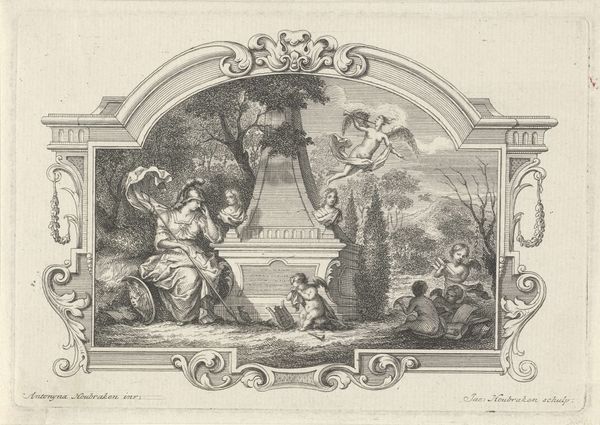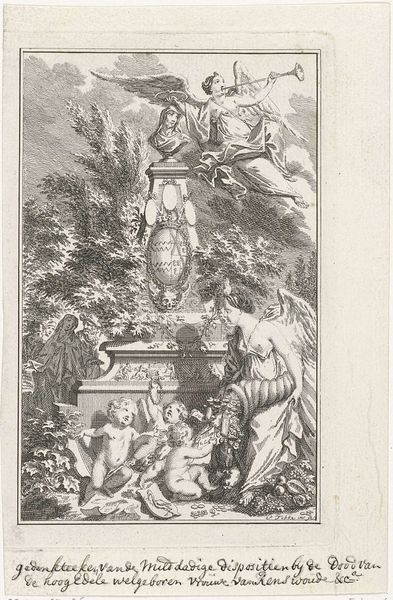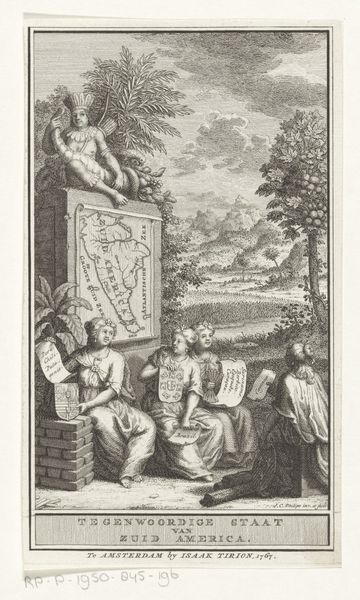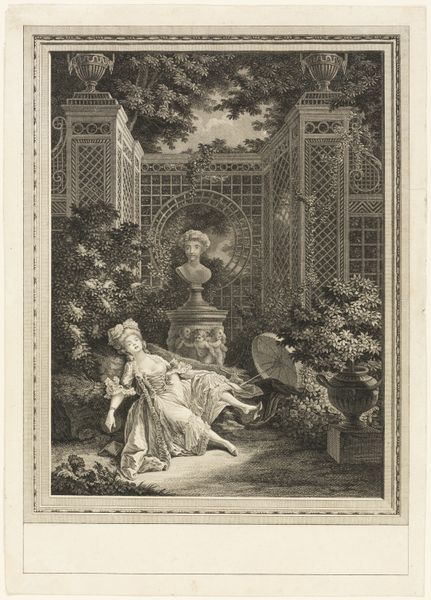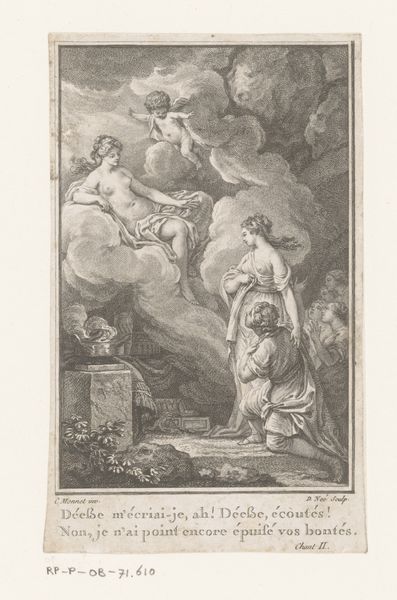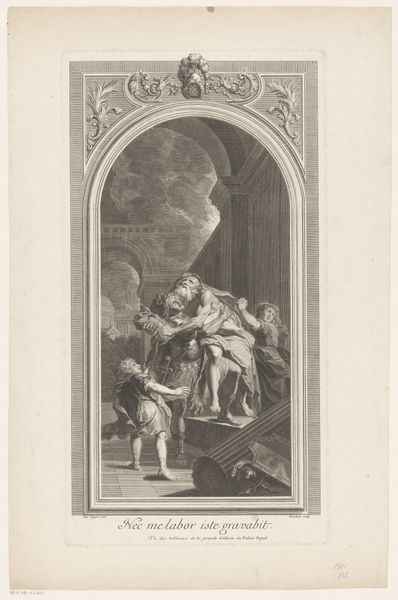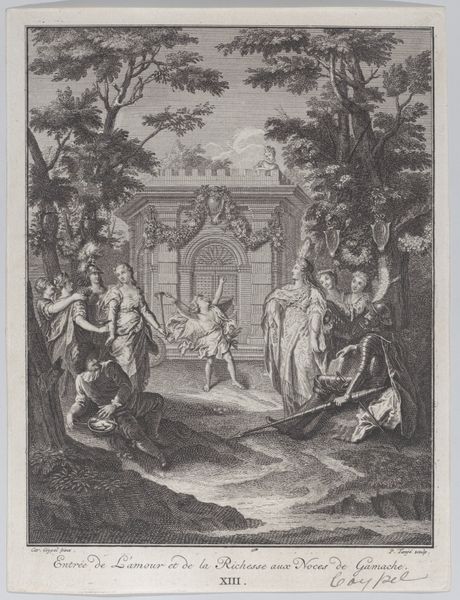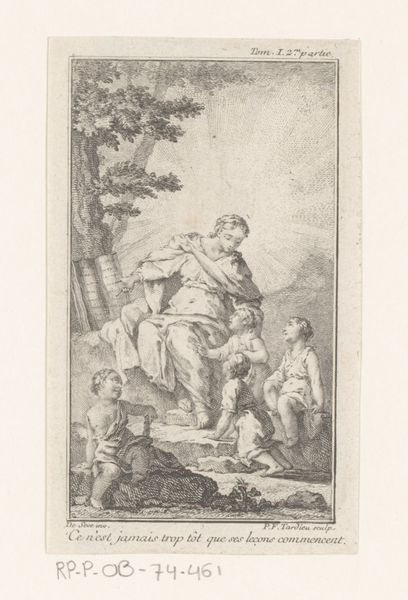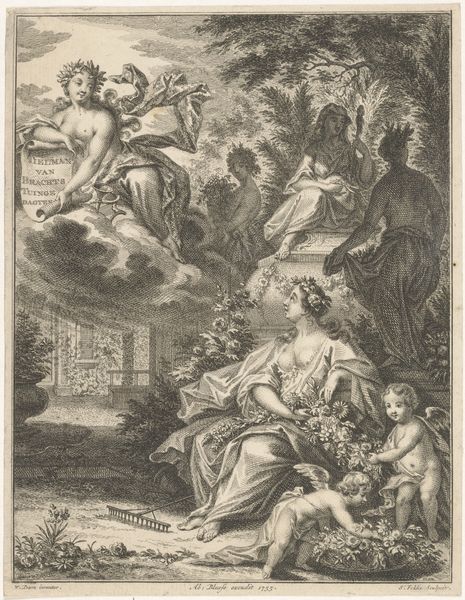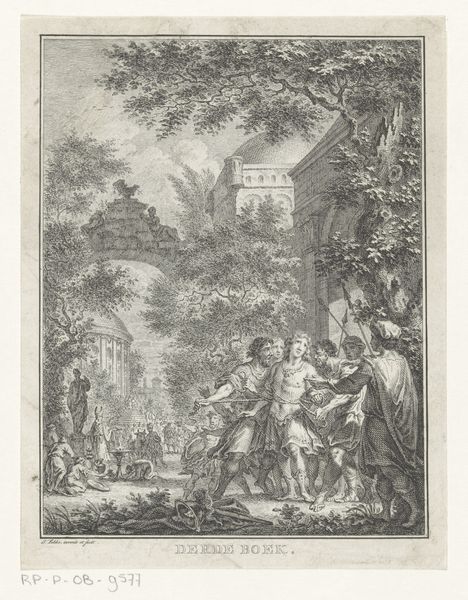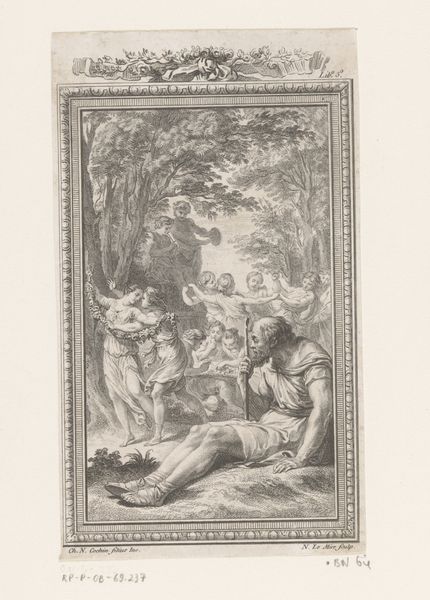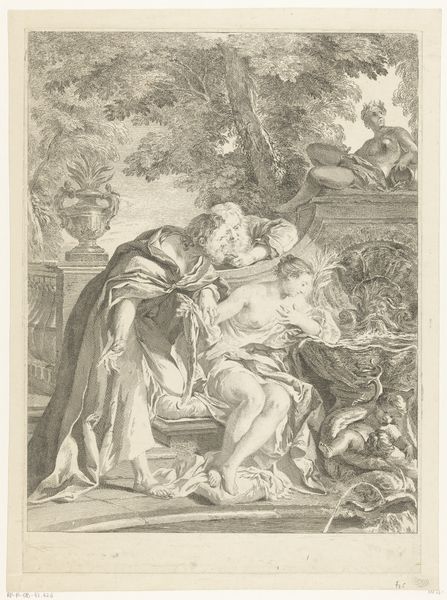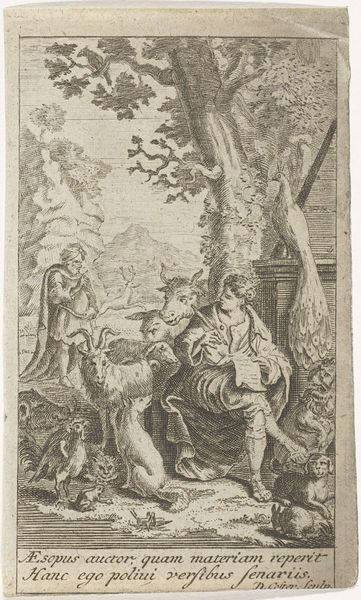
Dimensions: height 149 mm, width 97 mm
Copyright: Rijks Museum: Open Domain
This print was made in 1784 by Jean Dambrun. It presents us with a scene of mourning. A woman is grieving by a tomb, surrounded by putti, or cherubic figures, in a garden. The image operates through visual codes that were well established in European culture by the late 18th century. The tomb itself, the weeping woman, and the putti are all familiar symbols of grief and mourning. The tomb inscription is an invitation to those who read the print, while the putti draw our eye to the inscription, guiding us to contemplate our mortality. But it's important to remember that this image was made in a specific social and institutional context. In 18th century Europe, death and mourning were increasingly sentimentalized and aestheticized. The growth of museums and art academies helped to standardize artistic training and taste, further solidifying the visual codes we see here. To truly understand this print, we need to consider the social and cultural forces that shaped its creation. We can investigate the history of mourning practices, the development of art institutions, and the changing role of emotions in European society. This print is a reminder that art is always embedded in a particular time and place.
Comments
No comments
Be the first to comment and join the conversation on the ultimate creative platform.
